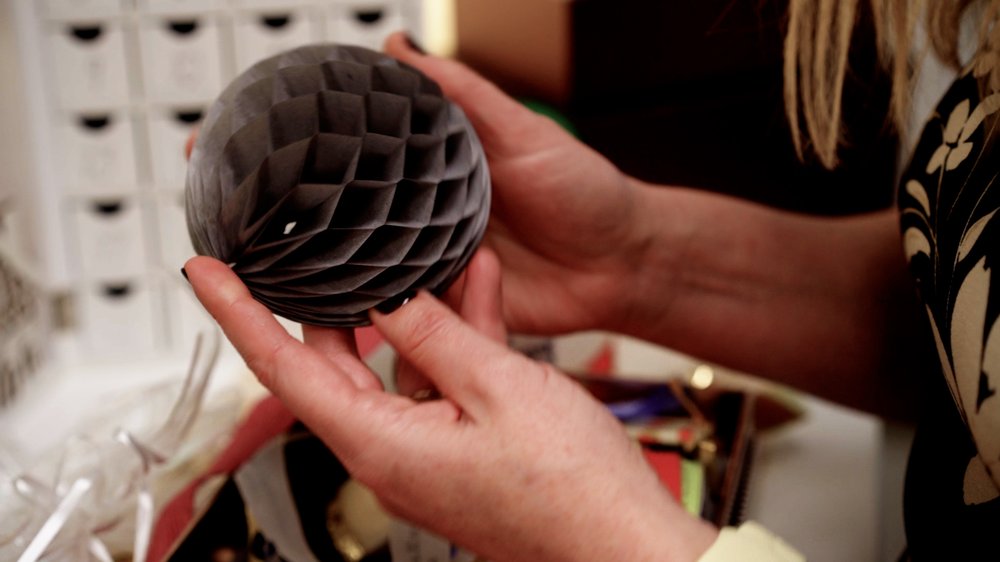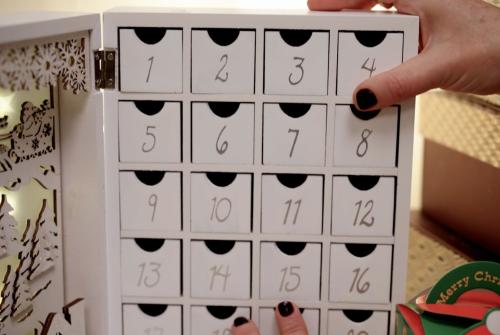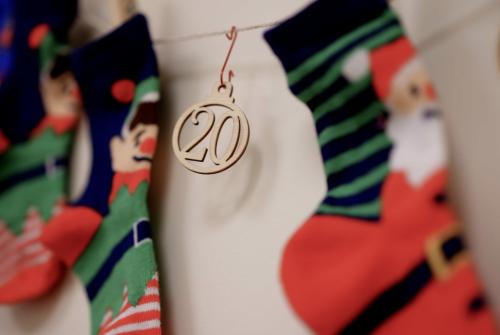Creating an inclusive festive season: Top tips by GOSH Eye Clinic Liaison Officer, Paula
Although a magical time, the festive season can be quite overwhelming for children with a visual impairment.
Paula Thomas, our Eye Clinic Liaison Officer, draws on her experience and shares advice on how to make everyone feel involved during the festive season.
Paula's advice for an inclusive festive season
Changes to everyday routines have a big impact on people with a visual impairment, and the busyness of Christmas time is no different. For example, the addition of a Christmas tree changes the layout of your home, and suddenly there are a lot more twinkling lights around.
This can make children feel isolated as they struggle to see changes in their environments, meaning they have to reply on others to communicate the changes to them.
Over the years I've found some small adaptions that help visually impaired children to be fully included in the festivities and ensure that they don't feel like they are considered an afterthought in the run up to Christmas.
Get involved!
Christmas means something different to everyone, and there is no one way of doing it. My main advice is to involve your child with every element where appropriate.
When you think about how to make sure Christmas festivities are fun for everyone – including your children with a visual impairment – you will want to consider:
- their age
- the level of vision
- what they are capable of
- how your family Christmas works
- if you are at home or away.
Advent calendars
Advent calendars are notoriously difficult for a child with little or no vision. They just aren’t that much fun if you aren’t searching for the numbered door. If your child has difficulty with this, then you may consider doing things slightly differently:
- one option is to purchase reusable advent calendars with drawers. These can be labelled in larger print, tactile numbers, braille, and colour squares or shapes. They can be used year after year and filled with appropriate gifts.
- you could also use little cloth gift bags or socks pegged to a washing line.
- for a larger advent calendar, consider a door hanging advent calendar with block colours.
Decorating the tree
Get your child involved with decorating the tree. This will help them visualise the tree and how it looks when it is finished. Some things to consider include the contrast of decorations on your tree, and whether the lights are better to be constant or chasing.
If you have an artificial tree then think about using products to create the smell of a real tree, this gives another sensory element to your home at Christmas.
You could create memories by purchasing a new decoration each year which holds some meaning. As the years go by this is lovely to unpack and revisit those memories each year. If the decorations are more tactile, they will be easier to distinguish and help unlock those memories. If you’re feeling creative, you could even try making your own decorations.

Christmas cards
Ask family and friends to send cards that your child can read independently. Braille them or send a ‘talking card’. There are also apps that can read handwriting.
Smells of Christmas
The smell of Christmas is very much part of the experience, especially if you’re relying on the senses besides sight.
Think about ways you could scent your home. This can include plug-ins, potpourri, scented candles, or cinnamon sticks on top of the radiator.
Get creative and bake! Gingerbread house making is always a great activity and brings the smell of Christmas into your home.
Gift giving
If you are buying for younger children, then many toys for this age group are multi-sensory and great for a child with visual impairment.
For an older child, don’t necessarily think about their vision but rather their interests, as you would with their siblings or friends. Just because vision may be limited it doesn’t mean they necessarily want just things that smell nice - believe me, you really can have enough bath sets and scented drawer liners! Though all very well-meaning gifts, all I actually wanted was the latest Barbie!
Identifying gifts under the tree
This all depends on how your Christmas runs. Is it a free for all under the tree? Do you take it in turns to handout gifts?
Whatever your way, make sure to include your child with a visual impairment in this process. If your child has some vision and can identify colours, then perhaps consider using different wrapping paper for each person, or using coloured ribbon for each person.
Another way to help distinguish presents is creating gift tags in different shapes for different members of the family. Or tying a bell to the gift for a visually impaired child means they can rummage under the tree and find their own gifts.
Setting the table
It’s always a good idea if your child can help with setting the table to get them involved. It means they know who is sitting where, where things are on the table, and who has the heaviest cracker which obviously must have the best gift! It can also help with any anxiety about knocking something over as they will know where things are.
Changes in the home
Even though your child knows where everything is in your home or family homes it may be that the addition of a Christmas tree means that things have moved around. Just moving furniture slightly potentially means it will be crashed into. Give your child time to relocate where things are and verbalise the changes to them.
If you’re spending time with lots of people then let your child know who is going to be there. Again, with lots going on things can easily become quite confusing.
Christmas games
If your family likes playing games at Christmas, think about how you can make these work for your child.
Some games we play include a version of Pictionary that uses a form of dough. Players need to shape an object for everyone else to guess – to make it even harder, blindfold everybody during this task! Another one of my family’s favourites is a version of charades where you make the sound of an object.
Many games are completely adaptable, you just need to think how to rather than how not to when choosing what you’re going to play. Ways of adapting these include:
- brailling the cards if your child is a braille user
- using a magnifier if this is appropriate to read the cards
- using technology and apps to read text.
Share your ideas with us
If you have your own ideas for creating an inclusive festive season, share with us @GOSH_intl




